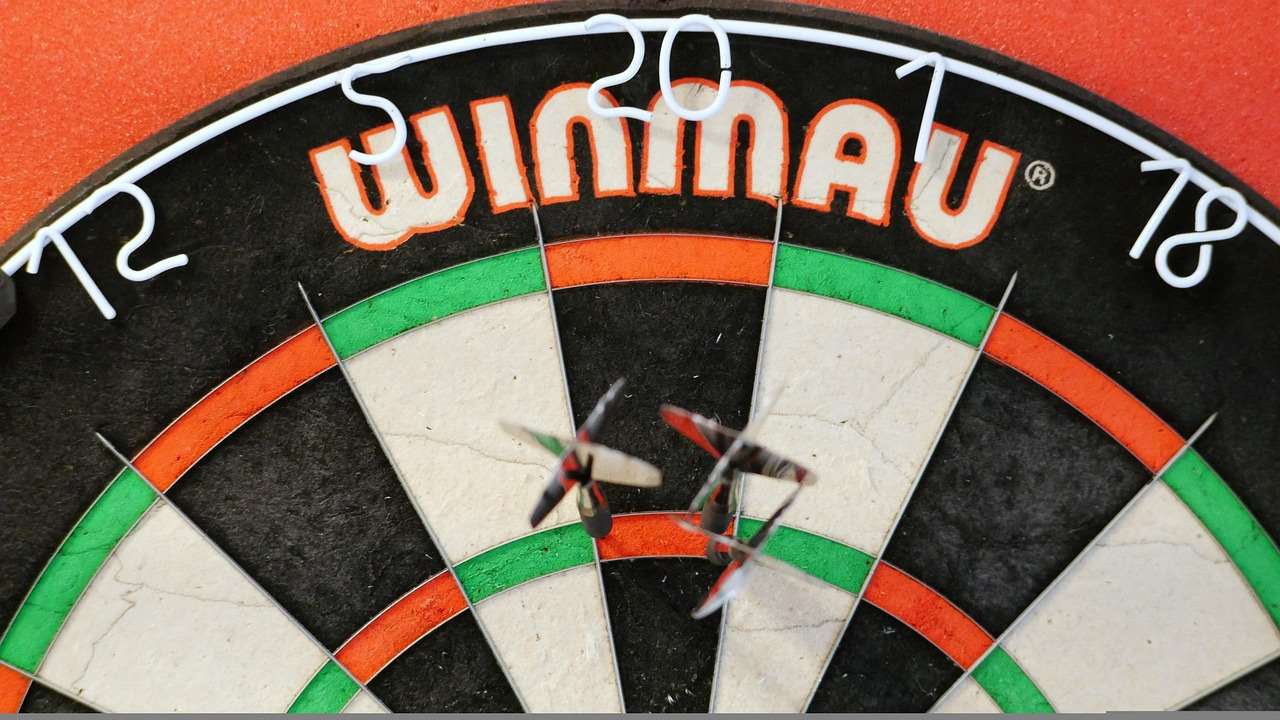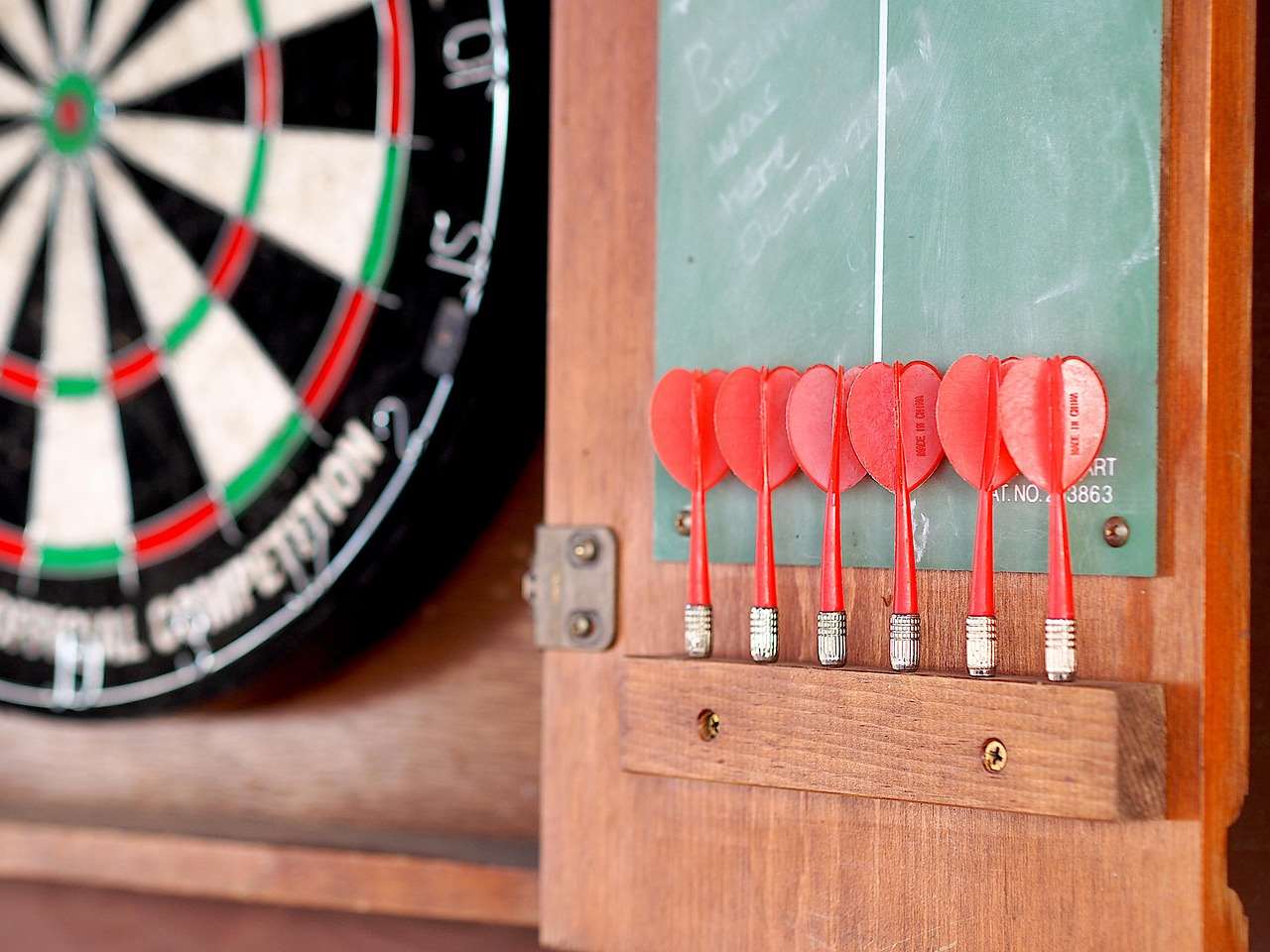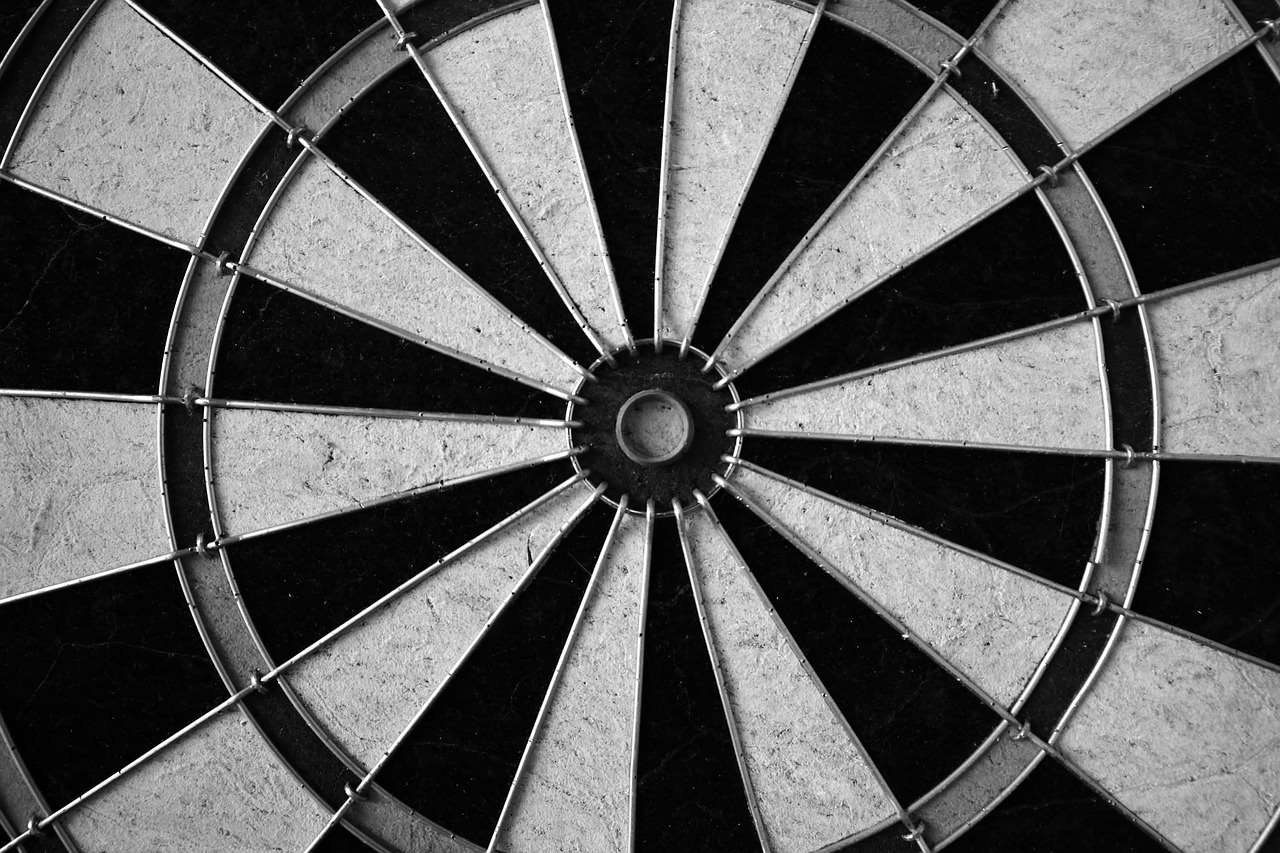Learning how to play 501 darts: beginner’s guide is the perfect entry point into the world of competitive darts! This popular game is all about reducing your score from 501 to zero, and the first player to do so wins. This guide will cover everything you need to know to get started, from the basic rules to winning strategies, and even helpful tips for improving your game.
⚠️ Still Using Pen & Paper (or a Chalkboard)?! ⚠️
Step into the future! The Dart Counter App handles all the scoring, suggests checkouts, and tracks your stats automatically. It's easier than you think!
Try the Smart Dart Counter App FREE!Ready for an upgrade? Click above!
Understanding the Basics: What is 501 Darts?
501 is arguably the most popular darts game played worldwide. It’s a straightforward game of skill and strategy where two players (or teams) compete to be the first to reduce their starting score of 501 to exactly zero. The simplicity of the core concept makes it an ideal starting point for new players while still offering a depth of strategy that keeps seasoned pros engaged. You can even explore fun dart game variations with modified rules as your skills grow.
The beauty of 501 lies in the need to strategically plan each throw, aiming not just for high scores, but also for setups that will allow you to “checkout” (finish the game) with a double or the bullseye.

Essential Equipment for Playing 501 Darts
Before you can dive into how to play 501 darts: beginner’s guide, you’ll need the right equipment. Luckily, darts doesn’t require a huge investment to get started. Here’s what you need:
- Dartboard: A standard bristle dartboard is essential. Make sure it’s properly mounted, with the center bullseye 5 feet 8 inches (1.73 meters) from the floor.
- Darts: A set of darts (usually three) is crucial. As a beginner, don’t worry too much about expensive darts. A decent set of brass darts will do just fine. Experiment with different weights and barrel shapes later as you develop your throwing style.
- Oche (Throwing Line): The oche, or throwing line, should be 7 feet 9.25 inches (2.37 meters) from the face of the dartboard. You can use tape or a designated mat to mark the line clearly.
- Scoreboard: You’ll need a way to keep score. A simple whiteboard or chalkboard works great, or you can use a dedicated dart scoreboard app on your phone or tablet.
Setting Up Your Dartboard Correctly
Proper dartboard setup is critical for fair play and preventing injury. Here’s a quick guide:
- Height: Ensure the bullseye is exactly 5 feet 8 inches from the floor.
- Distance: The throwing line (oche) should be 7 feet 9.25 inches from the *face* of the dartboard (not the wall).
- Lighting: Good lighting is essential. Make sure the dartboard is well-lit, preferably with a dedicated dartboard light, to minimize shadows and improve visibility.
The Rules of 501 Darts: A Step-by-Step Guide
Now that you have your equipment, let’s delve into the actual rules of the game. Understanding these rules is fundamental to learning how to play 501 darts: beginner’s guide.
- Starting the Game: Each player (or team) starts with a score of 501.
- Taking Turns: Players take turns throwing three darts at the dartboard.
- Scoring: The score for each throw is determined by where the dart lands on the board. Here’s a quick breakdown:
- Single Numbers: Landing in a regular numbered section scores that number (1-20).
- Double Ring (Outer Ring): Landing in the double ring scores double the value of that number.
- Triple Ring (Inner Ring): Landing in the triple ring scores triple the value of that number.
- Bullseye: The outer green ring of the bullseye scores 25 points. The inner red bullseye scores 50 points.
- Missing the Board: If a dart misses the board entirely or lands outside the scoring area, it scores zero.
- Calculating Your Score: After each turn, the player adds up the scores of their three darts and subtracts the total from their remaining score.
- Going Bust: If a player’s score goes below zero or reaches one, it’s called “going bust.” In this case, the player’s score reverts to what it was at the start of that turn, and their turn ends.
- Winning the Game: To win, a player must reduce their score to exactly zero, and the final dart thrown must be a double or the bullseye (which counts as a double 25). This is known as “checking out.”
For example, if you need 32 to win, you must hit double 16. If you hit a single 16 and then a double 8 you would go ‘bust’ and go back to needing 32.

Checkout Strategies for 501 Darts
Mastering checkout strategies is a crucial aspect of how to play 501 darts: beginner’s guide. Knowing which numbers to aim for to finish the game efficiently can significantly improve your chances of winning.
Common Checkout Combinations
- Double 20 (40): One of the most common and reliable checkout numbers.
- Double 16 (32): Another frequently used checkout, especially when setting up for it with a previous throw.
- Double 18 (36): Offers flexibility in setup, as it’s close to the 20 and 19 segments.
- Double 12 (24): Useful for leaving yourself with another double if you miss the first.
- Bullseye (50): The ultimate checkout when you have 50 remaining.
Simple Checkout Examples
- Remaining Score: 40: Aim for double 20.
- Remaining Score: 32: Aim for double 16.
- Remaining Score: 60: Aim for single 20 then double 20, or treble 20.
It’s also helpful to know that you can explore alternative darts rules for home play, but for competition sticking to these official rules is key.
Checkout charts, readily available online, can be incredibly helpful in learning various checkout combinations. Practice these regularly to improve your speed and accuracy when finishing a game. Remember, thinking ahead and planning your checkout strategy is just as important as hitting the target.

Tips and Tricks to Improve Your 501 Darts Game
Learning how to play 501 darts: beginner’s guide effectively requires more than just knowing the rules. Here are some tips and tricks to help you improve your game:
- Stance and Grip: Find a stance and grip that feels comfortable and allows for consistent throws. Experiment with different foot positions and how you hold the dart until you find what works best for you.
- Consistent Throwing Motion: Develop a smooth, repeatable throwing motion. Avoid jerky movements or excessive wrist action.
- Aiming: Focus on your target. Visualize the dart hitting the desired segment on the board.
- Practice Regularly: The more you practice, the better you’ll become. Even short, regular practice sessions are more effective than infrequent long ones.
- Warm-up: Before playing a serious game, take some time to warm up your arm and get your eye in.
- Mental Game: Stay focused and positive. Don’t get discouraged by missed throws. Learn from your mistakes and keep practicing.
- Know Your Averages: Understanding your average score per dart (or per three darts) can help you track your progress and identify areas for improvement.
Practicing Effectively
Simply throwing darts randomly won’t necessarily improve your game. Here are some structured practice drills:
- Around the Clock: Start at the 1 segment and work your way around the board, hitting each number in sequence. This improves your accuracy and control.
- Doubles Practice: Focus specifically on hitting doubles. Aim for each double in order, starting with double 1.
- Trebles Practice: Practice hitting the treble 20, a crucial segment for scoring high.
- Checkout Practice: Use checkout charts to practice various checkout combinations.
Remember to have fun and enjoy the process of learning and improving. It is important to master the basic darts fundamentals for beginners before you become more advanced.

Advanced Strategies for 501 Darts
Once you’ve mastered the basics, you can start incorporating more advanced strategies into your game of how to play 501 darts: beginner’s guide. These strategies can give you a competitive edge and help you win more games.
Strategic Setup Play
Instead of always aiming for the highest possible score, sometimes it’s better to strategically set up your next throw. For example, if you have a score of 161, instead of going for treble 20 (which would leave you with 101, a difficult checkout), you might aim for treble 19 (leaving you with 104), allowing you to set up a more favorable checkout route of Single 20, Treble 18 and Double 16 for the win. These subtle decisions are what separates good players from great ones.
Opponent Awareness
Pay attention to your opponent’s scoring and checkout abilities. If they are consistently scoring high, you may need to take more risks to keep up. If they are struggling with checkouts, you can afford to play more conservatively.
Understanding Percentages
Knowing the percentages of hitting certain targets can help you make better decisions. For example, even though the treble 20 is the highest-scoring segment, your chances of hitting it consistently might be lower than hitting the treble 19. Choose the target that gives you the best overall chance of scoring well. There are even aspects of adapting darts rules for beginners to help players improve their gameplay.

Conclusion: Mastering 501 Darts and Beyond
Learning how to play 501 darts: beginner’s guide is a rewarding journey that combines skill, strategy, and mental toughness. By understanding the rules, mastering checkout strategies, and practicing regularly, you can significantly improve your game and enjoy the thrill of competition.
Remember to focus on the fundamentals, develop a consistent throwing motion, and practice your checkout combinations. As you progress, explore advanced strategies and adapt your game to your opponent’s strengths and weaknesses.
Now that you have a solid foundation, grab your darts, step up to the oche, and start practicing. The more you play, the better you’ll become. So, go out there, have fun, and aim for that winning double! Ready to elevate your game? Find a local darts league or tournament to test your skills and meet fellow enthusiasts!
Hi, I’m Dieter, and I created Dartcounter (Dartcounterapp.com). My motivation wasn’t being a darts expert – quite the opposite! When I first started playing, I loved the game but found keeping accurate scores and tracking stats difficult and distracting.
I figured I couldn’t be the only one struggling with this. So, I decided to build a solution: an easy-to-use application that everyone, no matter their experience level, could use to manage scoring effortlessly.
My goal for Dartcounter was simple: let the app handle the numbers – the scoring, the averages, the stats, even checkout suggestions – so players could focus purely on their throw and enjoying the game. It began as a way to solve my own beginner’s problem, and I’m thrilled it has grown into a helpful tool for the wider darts community.